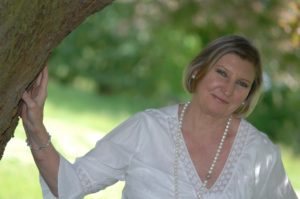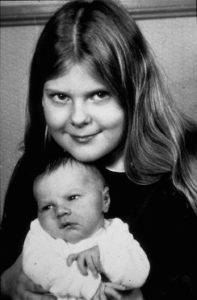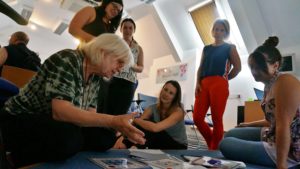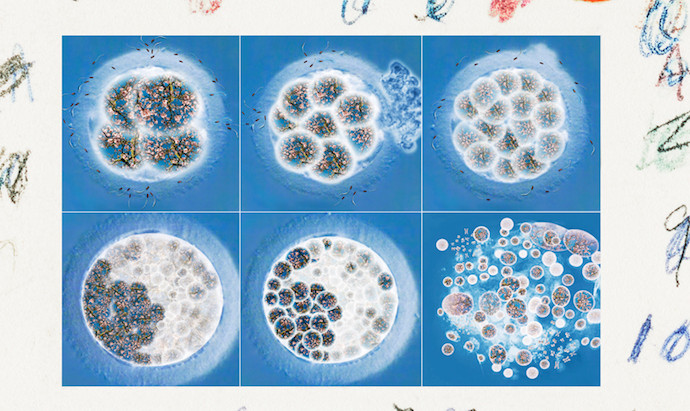Dr Kay Elder is to talk at Fertility Fest – in 1984 she joined Bourn Hall, the world’s first IVF clinic, established by Patrick Steptoe and Robert Edwards after their breakthrough with ‘test-tube’ baby Louise Brown. By 1986, 2000 IVF babies had been born worldwide, 1000 of these as a result of treatment at Bourn Hall¹. Kay managed the transition of IVF from in-patient to out-patient treatment cycles and became Head of the Outpatient Department.
She is discussing her experiences at Fertility Fest on 11 May 2018. She is sharing the stage with artist Gina Glover (who has created a series artwork capturing a ‘Life in Glass’, based on the work of scientists and health professionals at Bourn Hall) along with Sally Cheshire, chair of the HFEA (the UK regulator of fertility treatment) and Dr Roy Farquharson, Chair of the European Society of Human Reproduction and Embryology (ESHRE), at ’40 Years of IVF ‘at 10am on Friday 11th May as part of Fertility Fest’s week-long event (8-11 May).
Dr Kay Elder, Senior Research Scientist at Bourn Hall, to talk at Fertility Fest

Dr Kay Elder came to work for Patrick Steptoe and Robert Edwards at Bourn Hall purely by chance. Her introduction to IVF arrived via a telephone call in 1984, when Bourn Hall telephoned Cambridge University Clinical School to ask if they could recommend a locum doctor.
The world’s first IVF clinic was established after the team’s breakthrough with ‘test-tube’ baby Louise Brown, who celebrates her 40th birthday this summer. For ten years Steptoe, Edwards and Jean Purdy worked tirelessly to achieve the successful pregnancy and birth of the world’s first IVF baby. Between the team’s early achievements of fertilising a human egg outside the body and nurturing it to the 8 cell or blastocyst stage (1969-70) – and Louise’s birth in 1978, there had been over a hundred failed treatment cycles and dashed hopes.
With the birth of Louise and then Alastair MacDonald, the first IVF baby boy, the trio assumed that the struggle was over. However, the research granting agencies were still sceptical and reluctant to help them open a clinic where the technique could be refined. It took the team two years to raise the venture capital that made it possible for them to open a clinic in 1980, in the village of Bourn on the outskirts of Cambridge.

By 1986, 1000 IVF babies had been born as a result of treatment at Bourn Hall.
Kay is a research scientist – her work on the molecular biology of oncogenic viruses was published as a leading article in Nature in 1973. Intrigued by a wider context of the science behind clinical disease, she gained a scholarship from the Foulkes Foundation to study medicine at University of Cambridge, intending to return to clinical oncology research. However, the duties of a newly qualified doctor were incompatible with raising her two young children, and she was taking a career break when the call from Bourn Hall came.
At Bourn Hall Kay recognized that IVF represents a significant and important collaboration between science and medicine and was fascinated by its scientific potential. Steptoe tailored a part-time clinical position for her, which became full-time as her children grew.
The introduction of ultrasound scanning and more refined drug protocols simplified IVF treatment cycles, and Kay managed the transition from in-patient to out-patient treatment as Head of the Outpatient Department. IVF was gradually transformed into a robust medical treatment, and gynaecologists and cell biologists from all over the world came to learn about this exciting field of medicine.
Teaching the first generation of medics
Kay worked with Professor Edwards to establish a programme of workshops and seminars at Bourn Hall; with her medical and scientific experience of IVF, she taught a new generation of health professionals, many of whom now head up fertility clinics internationally.
Later collaborations with Universities led to the establishment of post-graduate MSc degree courses in clinical embryology; she has published several textbooks for students of assisted reproductive technology, as well as numerous peer-reviewed papers about the science of ART and the early development of oocytes and embryos.

Kay continues to teach and mentor students and combines this with her role as Senior Research Scientist at Bourn Hall, managing the research embryo bank and monitoring results and data.
She will discuss her experiences at Fertility Fest on 11 May 2018, sharing the stage with artist Gina Glover, who has created a series of artwork capturing a ‘Life in Glass’, based on the work of scientists and health professionals at Bourn Hall. The image at the top of this page is one of her works – see the full version here.
Fertility Fest
Kay and Gina will be joining Sally Cheshire, chair of the HFEA (the UK regulator of fertility treatment) and Dr Roy Farquharson, Chair of the European Society of Human Reproduction and Embryology (ESHRE), at ’40 Years of IVF’ at 10am on Friday 11th May as part of Fertility Fest’s week-long (8-11 May) programme of events, discussion, debate, support and solidarity at the Bush Theatre.
For more information, visit www.fertilityfest.com
Cheltenham Science Festival
This year’s Cheltenham Science Festival (June 5th -10th 2018) also features a session about ‘The Birth of IVF’ on Thursday June 7th, 4.45 pm. Kay Elder will participate in a panel discussion with BFS chair Jane Stewart and Progress Educational Trust Director Sarah Norcross, chaired by Professor Alan Pacey: www.cheltenhamfestivals.com/science
¹Peter Brinsden “30 Years of IVF: the legacy of Patrick Steptoe and Robert Edwards”






